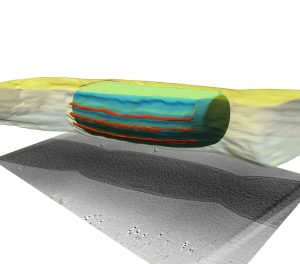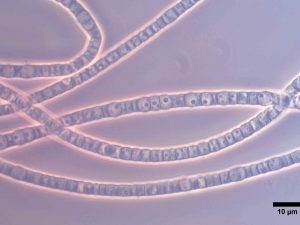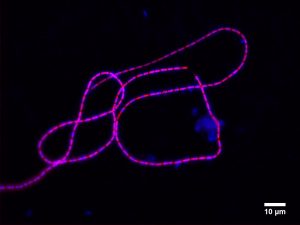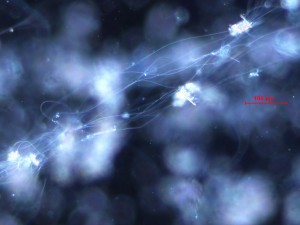
Figure 2. Three-dimensional reconstruction of a cable bacterium filament based on cryo-tomography (Dr. Ronald Koning, LUMC, Leiden). The red structures show the parallel fiber network that is emebbed in the cell enveloppe. Adapted from Cornelissens et al. (Frontiers in Microbiology, 2019).
A wide avenue for new technology
Very recently, our team has that the cell envelope of cable bacteria contains a fibrous bio-material with extraordinary electrical properties, including an electrical conductivity that is orders of magnitude higher than currently known biological materials (Meysman et al., Nature Communications, 2019). This discovery also opens up a whole new avenue for applied research and provides a tremendous opportunity for new functional materials and potentially disruptive technology.
The conductive fibers of biological origin, and therefore, they obey a different chemistry as the polyheterocyclic molecules currently used in organic electronics. This opens a whole new window of opportunities, where we can use the well-developed machinery of the life sciences and biotechnology (e.g. synthetic biology, biopolymer engineering) to construct, enhance and tailor a new set of conductive bio-polymers. Being of biological origin, the fibers will also have different properties (biofunctionalization, biocompatibility and biodegradability) than the conjugated polymers currently used in organic electronics, thus allowing radically new applications that could revolutionize health care (e.g. medical nano-biosensors, new neural interfaces, bioelectric medicine), energy production (biological fuel cells), environmental protection (e.g. biosensors) and electronics (wearable bionics, biodegradable and stretchable electronic systems).




